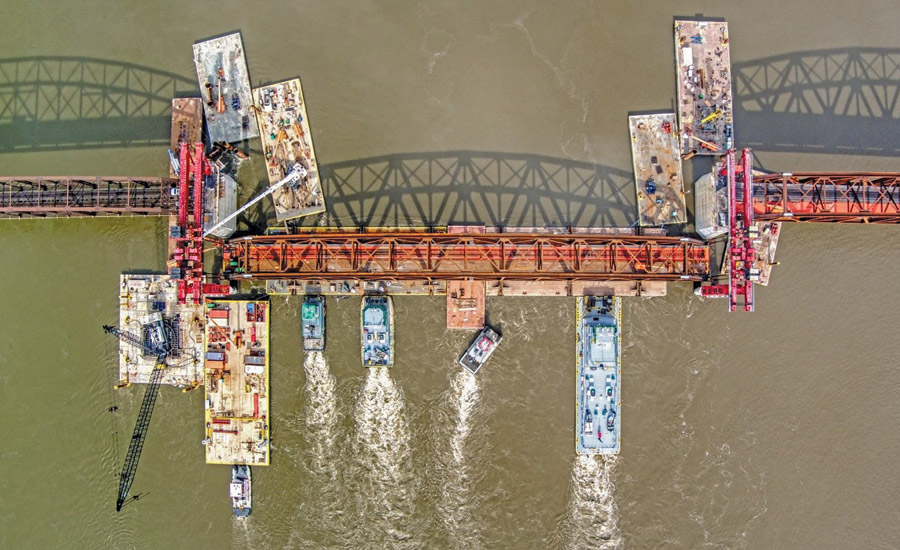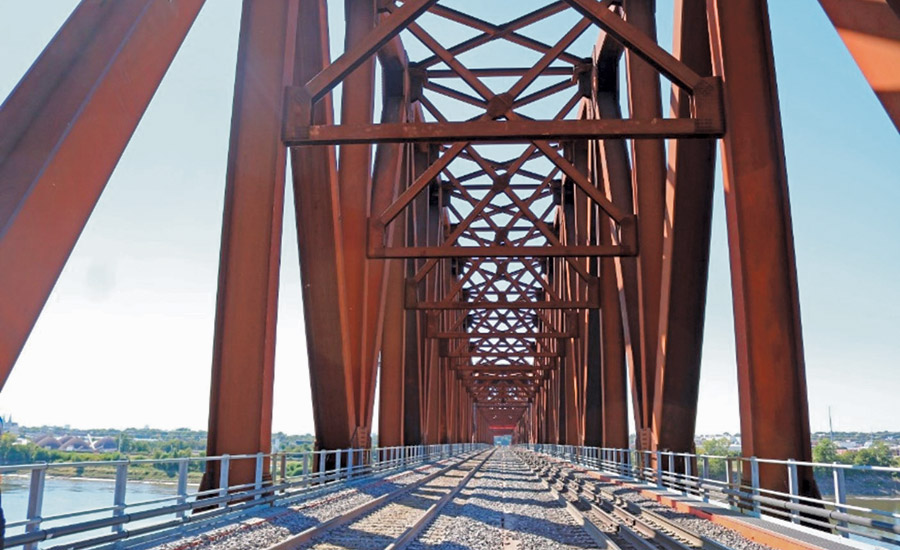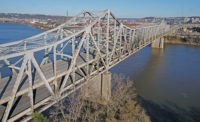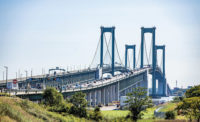Merchants Bridge
St. Louis
BEST PROJECT
Submitted by: TranSystems
Owner: Terminal Railroad Association of St. Louis
General Contractor: Walsh Construction Co. II
Lead Design Firm/Civil Engineer/Structural Engineer: TranSystems
Design/Structural Engineering: Burns & McDonnell
Subcontractors: Veritas Steel; D&K Welding Services Inc.; Ameren
Opened in 1889, Merchants Bridge over the Mississippi River is the second-oldest river span serving the St. Louis region, and by 2018, it had far exceeded its design life. As one of the nation’s primary east-west rail corridors, it was operating under a variety of speed, clearance and load restrictions, which limited the size and number of daily crossings. Considering the bridge’s operational limitations and ever-increasing maintenance and inspection costs, Terminal Railroad Association of St. Louis and the six Class I freight railroads that it services agreed that a replacement was necessary to bring the 4,340-ft-long structure up to current standards.
The resulting $222-million Merchants Bridge project included the replacement of three 520-ft-long double-track truss spans and seismically retrofitting and encasing the existing masonry river piers. The east and west approach structures were improved by adding ballasted deck to 940 ft of existing approach spans and encapsulating an existing 750-ft steel trestle in light weight concrete fill with mechanically stabilized earth walls. Delivered under a design-bid-build scheme, the project incorporated project delivery methods that improved safety and sped completion of each span replacement while limiting bridge and river traffic outages. Through careful planning and coordination, the team limited the number of allowable rail outage days from 30 planned days to 24 actual days over the three span replacements during the project’s four-year duration.

Photo courtesy of TranSystems
During design and construction, the team had to conduct coordination and permitting within the St. Louis Harbor on the Mississippi River between the U.S. Army Corps of Engineers, the U.S. Coast Guard and the River Industry Action Committee. Preconstruction environmental clearance and permitting involved multiple federal agencies and coordination that involved Missouri and Illinois state agencies as well as municipalities. Three NEPA approvals were required, involving field investigations, human and natural environmental resource analyses and hydrologic and hydraulic analyses.
Working on a live rail line required coordinated track outages. The existing double track was reduced to a single track with a scheduled five-hour daily track outage to accommodate construction. A planned 10-day rail outage took place for each of the three truss span replacements, as did two 24-hour river channel outages so workers could remove the old river truss spans and install the new ones. Through planning and execution between the construction and engineering teams, the actual outages were reduced to 7.5 days per span.

Photo courtesy of TranSystems
The team also coordinated daily river traffic in the primary and secondary river channels, which required tight logistics and constant monitoring of river levels. Crews assembled and mobilized truss spans on barges, complete with a special lift and slide plan to install them.
The team’s efforts led to the project completing ahead of schedule and under budget. The improved Merchants Bridge can now handle two freight trains simultaneously as well as maintain prompt Amtrak service, and, with this new capacity, the bridge can reestablish itself as a vital link in a supply chain crossing the Mississippi River.





Post a comment to this article
Report Abusive Comment